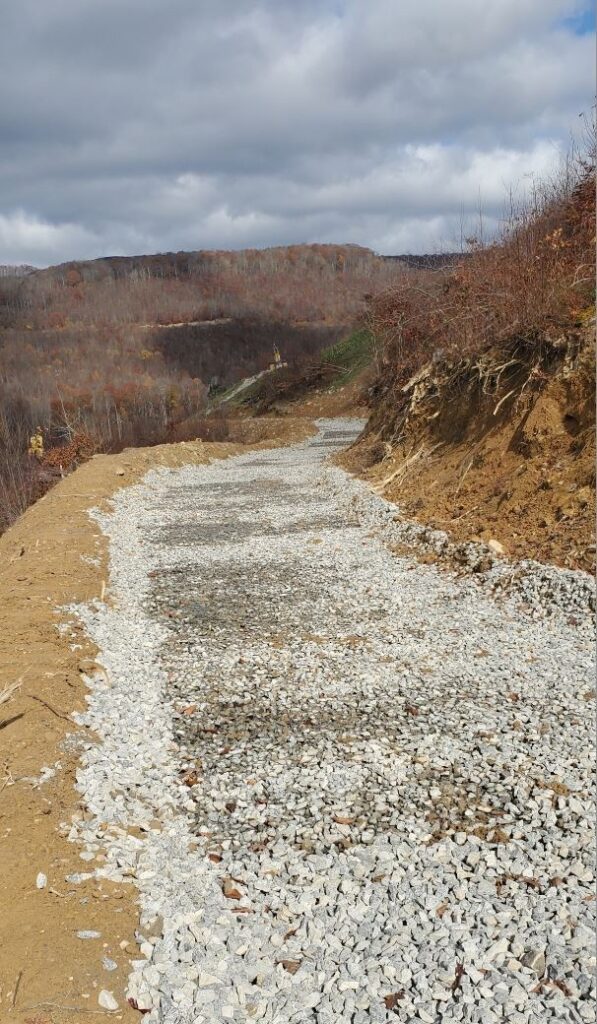Case study
Pocahontas mine pool dewatering project
In 2024, we successfully implemented a passive treatment system to manage iron-rich mine water at our Pocahontas mine. The mine had been divided into two drainage areas, with the eastern up-dip portion having free-flowing water that was absent of iron, and the western down-dip portion containing an impounded mine pool with ferrous iron concentrations of 9.7 mg/l.
Challenge
The mine pool in the western section posed significant challenges. The vertical head pressure created a high flow rate of 342 gallons per minute when drained through a horizontal drill hole. Once the pool was drained, ongoing flow rates fluctuated between 30 and 50 gallons per minute, influenced by precipitation and infiltration. Monitoring rain gauge data became necessary to determine lag times between precipitation events and water infiltration into the mine. Additionally, the iron concentration in the discharged water, initially at 9.7 mg/l, needed to be reduced to comply with regulatory standards.
Solution
To avoid chemical treatments, a passive treatment approach using Iron Staining Beds (ISBs) was adopted. To lessen the surface disturbance for the ISBs construction, two existing skid roads previously used by timber operators were repurposed and then lined with stone and rock barriers.
Over 60,000,000 gallons of water were treated through the ISBs before being redirected to a polishing and discharge pond. The ISBs successfully reduced iron concentrations to levels between 0.25 and 0.35 mg/l, well below the permitted discharge limit. The entire process was environmentally sustainable, as no chemicals were used, and the system was entirely gravity-driven, eliminating the need for pumping.
The ISBs produced water with lower dissolved solids, lower conductivity, and lower osmotic pressure compared to conventional chemical treatment. The iron in the beds remained inert and stable, eliminating the need for disposal. To complete the reclamation process, the surrounding soil will be rolled over the beds and seeded.
Outcomes
The use of passive iron removal technology at the Pocahontas mine proved to be a cost-effective, environmentally responsible solution. The ISB system successfully eliminated the need for perpetual monitoring and chemical treatment while ensuring compliance with water quality regulations. This project serves as a model for sustainable mine water management and reclamation strategies in the mining industry.

